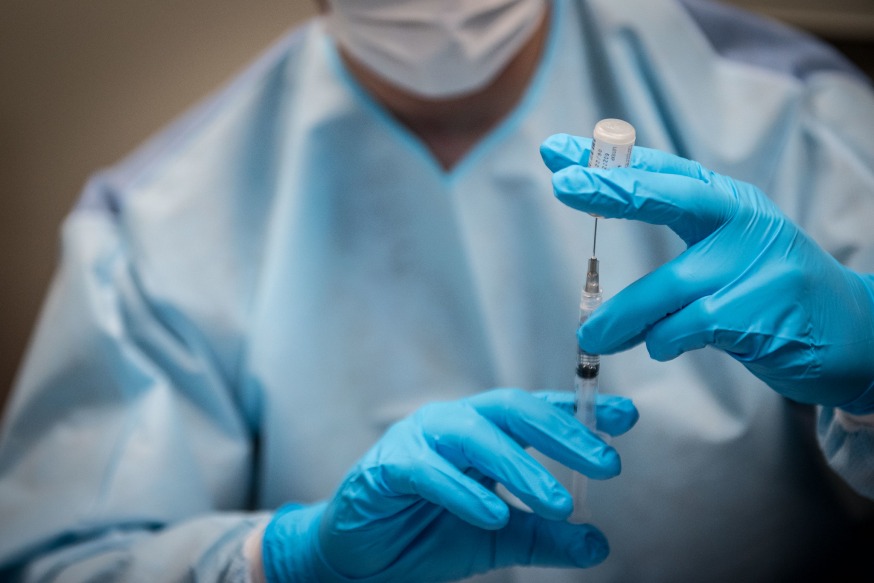
COVID-19 Vaccine (Michael Appleton/Mayoral Photography Office)
June 16, 2021 By Allie Griffin
The sky above the New York Harbor was lit up with a firework display last night marking the milestone that 70 percent of adults across the state have received at least their first shot of the COVID-19 vaccine.
However, not all neighborhoods across the state have a vaccination rate worth celebrating.
Many predominantly Black communities in New York City have much lower vaccination rates than the statewide percentage — including several in Queens.
For instance, the greater Far Rockaway area and various sections of southeast Queens lag behind much of the rest of the city. These areas have some of the lowest vaccination rates among neighborhoods across the five boroughs, according to city ZIP code data.
Far Rockaway/Edgemere (11691) has the lowest vaccination rate citywide. Just a third of its residents, 33 percent, have had at least one dose of the COVID-19 vaccine and only 28 percent are fully vaccinated — meaning they got the single-dose Johnson & Johnson vaccine or both doses of either the Pfizer or Moderna vaccines.
The nearby ZIP code 11692 encompassing Arverne and Edgemere is also among the neighborhoods with the lowest vaccination rates. About 36 percent of its residents have had at least one dose and 31 percent are fully vaccinated.
Meanwhile, on the opposite end of the Rockaway Peninsula, the predominantly white and higher income neighborhood of Breezy Point (11697) has had more than 77 percent of its residents shot with at least one dose and 71 percent fully vaccinated.
The trend was also true for COVID-19 positivity rates. Far Rockaway was one of the neighborhoods hardest hit by the pandemic, while Breezy Point saw a relatively low number of cases among its residents.
The differences in vaccination coverage and inequities related to the virus are due to structural racism, the city health department says.
"Structural racism — centuries of racist policies and discriminatory practices across institutions, including government agencies, and society — prevents communities of color from accessing vital resources (such as health care, housing and food) and opportunities (such as employment and education), and negatively affects overall health and well-being," the health department site states.
Southeast Queens neighborhoods that have large Black and minority communities like Laurelton/Rosedale (11413), South Jamaica/Springfield Gardens (11434), Rosedale (11422) and St. Albans (11412) also have lower vaccination rates compared to the rest of Queens. Less than 40 percent of residents in each neighborhood has had at least one shot of the COVID-19 vaccine.
Both the city and state have attempted to counter this by utilizing community-based organizations, local leaders, doctors and churches in their vaccination efforts to earn the trust of communities of color.
Mayor Bill de Blasio has also rolled out a number of vaccine prizes such as sports tickets, unlimited MetroCards and most recently the chance to win $2,500 to incentivize people to get the shot.
"It's going to take persistence and intense constant effort at the grassroots," Mayor Bill de Blasio said during a press conference Wednesday when asked about the lower vaccine rates. "We're just going to keep going nonstop and keep building up those numbers."






